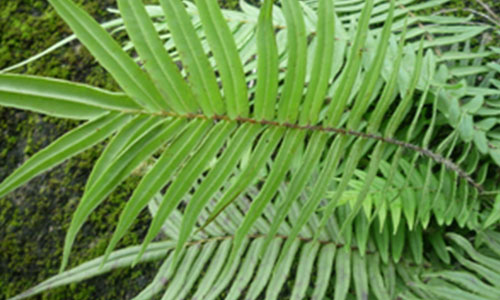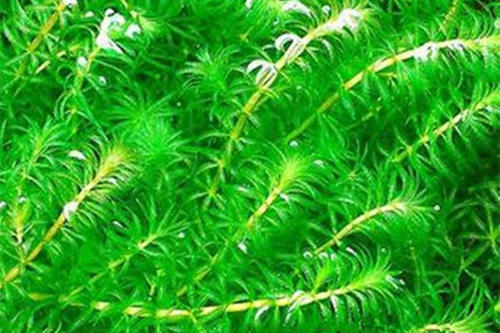How to grow Pteris vittata L
Written by Maggie
Nov 27 2020

The Pteris Vittata L is named for its resemblance to a centipede. It is known that Pteris Vittata L has a strong enrichment effect on arsenic, with the functions of removing wind and dehumidifying, relaxing tendons and activating collateral channels, and detoxing and killing pests. So how does the Pteris Vittata L work? Let's go and have a look!
Pteris Vittata L picture

Pteris Vittata L's farming methods
Pteris Vittata L was born and attached to the crevice of the forest and the trunk of the tree by the stream. It prefers warm moist and semi-cloudy environments. The suitable temperature for growth was 16 ~ 24℃ from March to September, and 13 ~ 16℃ from September to March of the following year. In winter the temperature should not be low dry 8℃, but a short time can withstand low temperature 0℃. It can also withstand high temperature above 30℃.
Because Pteris Vittata L prefers moist soil and higher air humidity. In spring and autumn, it needs to be watered adequately, keep basin soil not dry, but should not be watered too much, otherwise the leaf is easy to wither and yellow fall off. In summer, in addition to watering, also need to spray water several times a day, special suspension cultivation needs greater air humidity, otherwise the air is dry, pinnate lobules prone to curling, scorch phenomenon. Pteris Vittata L likes bright scattered light, but can also tolerate low levels of sunlight. Avoid direct sunlight. Shading networks should be set up for large-scale cultivation, and the shading rate of 50 {bf} ~ 60 {bf} is appropriate.
Potting Pteris Vittata L should use loose, fertile, breathable neutral or slightly acidic soil. A mixture of leaves or peat soil, culture soil or coarse sand is commonly used. Basin bottom mat is broken tile and broken brick more, being helpful for drainage, breathe freely. Fertilizing once every ten days in the growing period, and using "hui friend" 20-20-20 general fertilizer or 20-8-20 four seasons high-nitrate potash fertilizer. In the meantime, in the growing period, we should remove the withered leaf and yellow leaf at any time, keep the leaf pure and fresh and green. Water spraying, topdressing and pruning should be used to adjust the plant state, and ventilation should be paid attention to.

Reproduction methods of Pteris Vittata L:
Scolopendra is commonly propagated by plant separation, spores and tissue culture.
Spore: When Pteris Vittata L uses spores for reproduction, it should select leaf mould or peat soil with brick chips as the sowing substrate and put them into the sowing vessel. The collected mature spores of renal fern were evenly distributed into the seeding basin, and the soil surface was kept moist by spraying. After sowing, the sporophytes were released for 50 ~ 60 days.
Tissue culture: Pteris Vittata L tissue culture is also a method, but is not commonly used in families, I will not go into details.
Plant separation: Pteris Vittata L can be carried out all year round, preferably in May or June. At this time, the temperature is stable, the mother plant gently peeling, separate stolon, every 10 cm potted 2 ~ 3 plexus stolon.15 cm lifting basin with 3 ~ 5 plexus creeping branches. Place it in half shade after planting and water to keep moist. When new leaves sprout on the rhizome, then put the sunshade net for curing.
Pest control: Indoor cultivation of Pteris Vittata L, such as poor ventilation, vulnerable to aphids and starscream. We can use soap water or 40 {bf} oxidation dimethoate 1000 times liquid spray control. When the water is too much or the air humidity is too large, the kidney fern is prone to physiological leaf blight, pay attention to the basin soil should not be too wet and 65 {bf} instead of the forest zinc wettable powder 600 times liquid spraying.

Maintenance method of Pteris Vittata L:
Summer:
1. To maintain Pteris Vittata L, air convection should be strengthened so that the internal temperature of Pteris Vittata L can be emitted.
2. Put Pteris Vittata L in a half shade, or shade it 50 {bf}.
3. Spray Pteris Vittata L appropriately 2 to 3 times a day.
Winter:
1. Move Pteris Vittata L to an indoor place with bright light for maintenance.
2. Outside, the Pteris Vittata L can be wrapped in a thin film for wintering, but the film must be removed every two days at noon when the temperature is high to allow it to breathe.
Pteris Vittata L is afraid of direct light, so it needs to be maintained in a semi-shade or shaded by 70 {bf}. When put in indoor conserves, put in the place with bright light as far as possible, and every other one, two months move to an outdoor half shade place or shade conserve a month, in order to let its accumulate nutrients, restore growth potential.
Latest Updated
- Benefits of Bugleweed - 7 Science-backed Health Benefits
- Bugleweed Dangers & Side Effects - Is It Poisonous?
- How to Plant Evergreen Trees - What You Should Know
- When to Plant Evergreens - Grow Guide for Evergreen Trees
- 12 Wonderful Evergreen Shrubs for Your Garden
- 12 Popular Evergreen Plants with Pictures for Beginners
- When And How To Prune A Lilac Bush Like a Pro
- How to Grow & Care for Lilac Vine (Hardenbergia Violacea)
- Japanese Lilac Tree (Syringa Reticulata) Care & Propagation Guide
- Shumard Oak Pros and Cons - What to Know
Popular Articles
- Winter maintenance of Antirrhinum Majus
- How to Grow Terminalia Mantaly Tree
- How to Grow and Care for Crossostephium Chinense
- How to grow Antirrhinum Majus in spring
- Peristeria Elata (Dove Orchid) Profile: Info & Care Guide
- Underwatered Snake Plant (Sansevieria Trifasciata) - Signs And How To Fix
- How to Care for Brazilian Jasmine Plant (Mandevilla Sanderi)
- How to Grow & Care for Graptopetalum Purple Delight in Summer
- Rosa Chinensis (China Rose): Plant Growing & Care Tips
- How to Care for Baby Sun Rose (Aptenia Cordifolia)